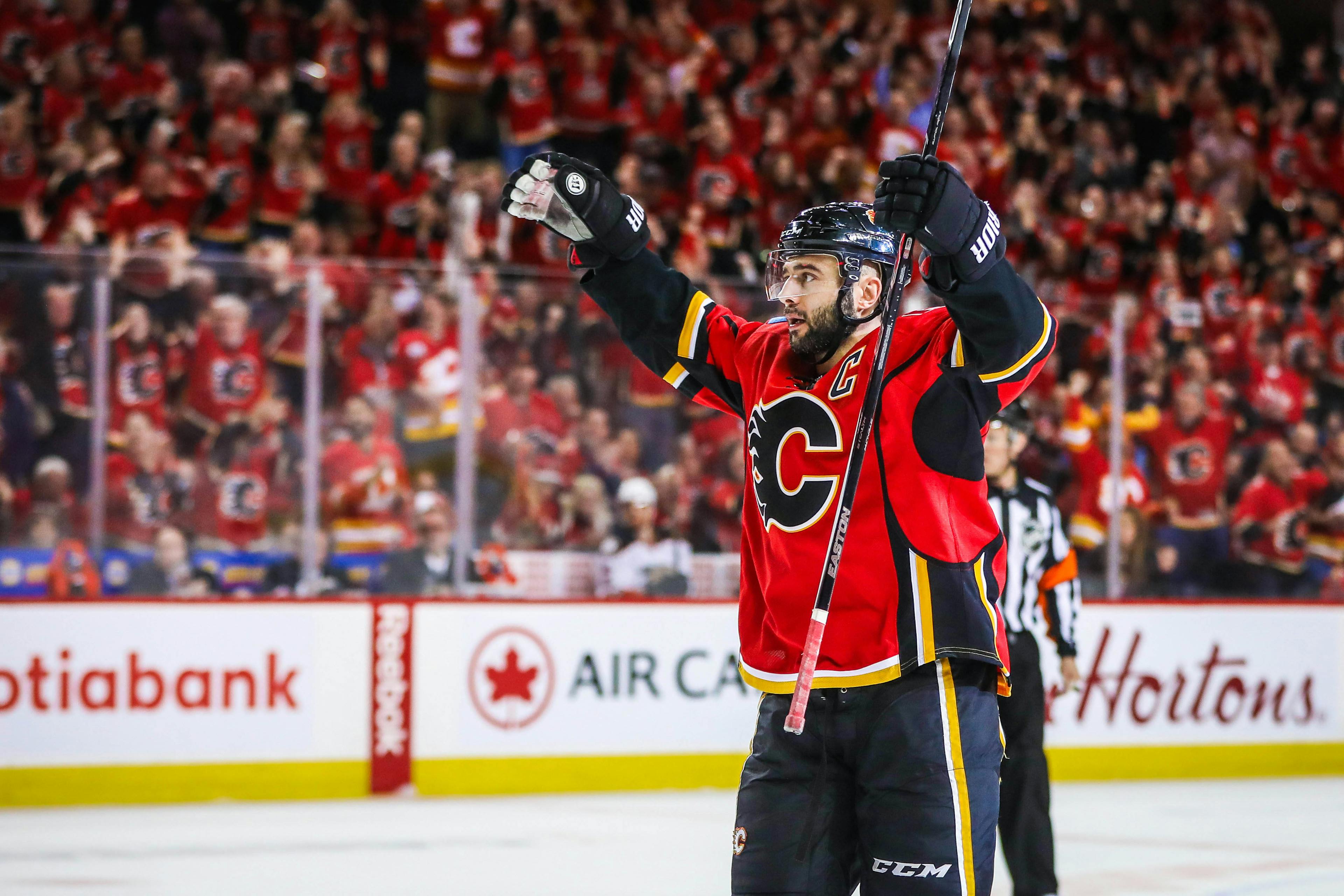The Ducks have already forced big improvements for the Flames

By Ryan Pike
6 years agoIn the 1980s, the Calgary Flames came a long way in a short period of time. They were a scrappy up-and-coming team when they arrived in Calgary in 1980, making it to the third round of the playoffs in their first season after relocation. The primary reason the Flames didn’t have more success, and arguably one of the big reasons they did have success, are the Edmonton Oilers.
The Oilers were a force to be reckoned with during the ’80s. Not only that, they were the most frequent roadblock for the Flames: three times during the decade the team saw their postseason end at the hands of Edmonton. But the Oilers’ primacy as Calgary’s most frequent roadblock led the Flames to beef up their team with offensive firepower in order to match Edmonton.
After two consecutive playoff runs ended at the hands of the Anaheim Ducks, it might be time to start thinking about the Ducks as a catalyst for the Flames’ future success.
A tale of two seasons
In his end-of-season press conference, Flames general manager Brad Treliving described the 2015 Flames as “overwhelmed” in their second round series loss to the Ducks. He didn’t feel that was the case this season.
If you look at the numbers, they back up Treliving and Glen Gulutzan’s contentions that the Flames were very much improved.
| 2015 | 2017 | Diff. | |
| Corsi (%) | 44.8 | 51.2 | +6.4 |
| Fenwick (%) | 44.6 | 51.2 | +6.6 |
| Shots (%) | 43.7 | 52.6 | +8.9 |
| Scoring Chances (%) | 37.3 | 53.8 | +16.5 |
| High Danger Ch. (%) | 47.0 | 51.1 | +5.1 |
| Shooting Pct. | 5.4 | 1.9 | -3.4 |
| Save Pct. | 90.8 | 90.3 | -0.5 |
| PDO | 96.2 | 92.2 | -4.0 |
Compared to 2015, the Flames did a very good job of reducing their Corsi Against (-55), Fenwick Against (-29), Shots Against (-27) and Scoring Chances Against (-41), while either increasing or keeping consistent their offensive raw numbers.
It wasn’t good enough to win, but it was good enough to make the Ducks seem like they were the worse team.
Two years of changes
The Flames made a bunch of changes in-between the two Ducks series that, combined with their coaching change and move to a more structured playing system, seemed to provide better results.
- Out: G Jonas Hiller & Karri Ramo; D David Schlemko & Kris Russell; F Joe Colborne, David Jones, Drew Shore, Jiri Hudler, Brandon Bollig & Josh Jooris (and head coach Bob Hartley)
- In: G Brian Elliott & Chad Johnson; D Dougie Hamilton, Michael Stone & Matt Bartkowski; F Kris Versteeg, Alex Chiasson, Troy Brouwer, Freddie Hamilton, Curtis Lazar & Matthew Tkachuk (and head coach Glen Gulutzan)
Their on-ice changes have seemed to move towards more of a puck-moving style, particularly with the team upgrading their secondary players. The more significant change seems to have been the coaching change, as Hartley’s team played on their heels most of the time and let the game come to them – and that’s reflected in their underlying numbers – while Gulutzan’s team tries to dictate the pace much more consistently.
A look ahead
The 2016-17 Flames were still arguably figuring out how to play Gulutzan’s sytem and playing with each other. They out-played Anaheim but couldn’t quite beat them. With a summer of improvements ahead, and another year’s worth of team familiarity with systems and each other, it seems probable that the team can take another step next year. Hopefully it’s enough to beat Anaheim the next time they’re matched up.
Recent articles from Ryan Pike




